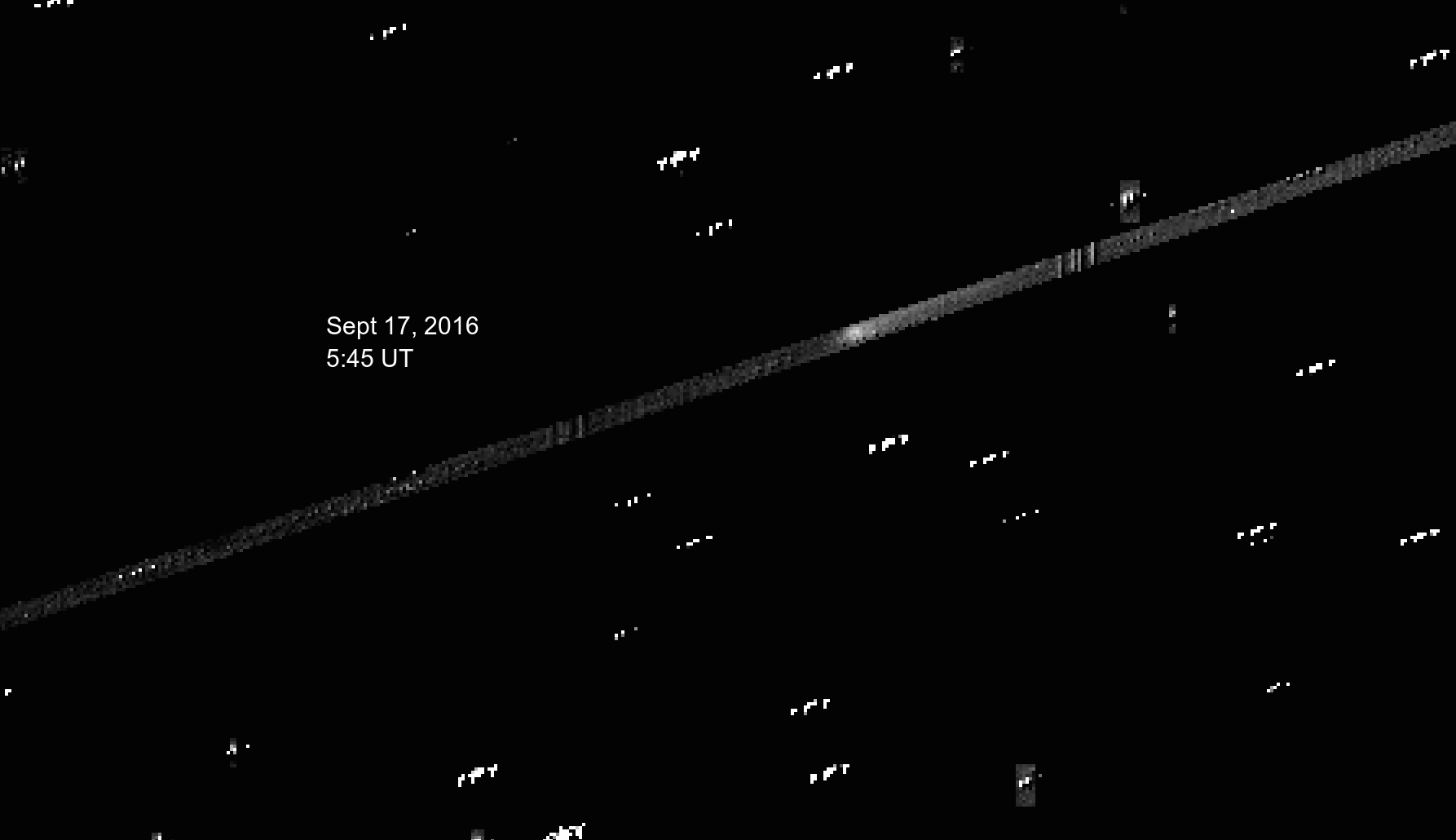During the last month of Rosetta’s operations at Comet 67P/Churyumov-Gerasimenko, it was no longer possible to observe the comet with telescopes on Earth because it was not far from the Sun’s position in the sky and therefore not visible in the night-time. Fortunately, NASA’s Kepler space observatory stepped in, taking images of the comet every 30 minutes from 7 to 20 September, providing important context to Rosetta’s in situ measurements.

A series of 15 images of Comet 67P/C-G taken with the Kepler space observatory between 17 and 18 September 2016. The comet is seen passing through Kepler’s field of view from top right to bottom left, as outlined by the diagonal strip. The white dots represent stars and other regions in space studied by Kepler. Credit: C. Snodgrass (The Open University) and E. Ryan (SETI Institute)
A world-class exoplanet hunter, Kepler is now in its second mission, called K2, which started on 30 May 2014. While still looking for exoplanets, it is now performing observations along the ecliptic and so observing a wealth of Solar System objects, from large bodies like Neptune and Pluto to smaller ones, like comets. For example, it took images of Comet Siding Spring (C/2013 A1) in October 2014.
“Observing Comet 67P/C-G with Kepler was a unique opportunity to get a global perspective of the gas and dust in the comet’s environment while Rosetta was getting closer and closer to the nucleus,” says Colin Snodgrass of the Open University, UK, who coordinates a consortium of professional astronomers that observed the comet remotely during the time of Rosetta’s mission.
“Together with the many ground-based observations of the comet performed over the last couple of years, these images will be instrumental to understand the link between the activity observed locally by Rosetta and remotely from Earth (or near Earth), providing crucial information for the study of other comets that we cannot visit with spacecraft.”









Discussion: 2 comments
Amazing job!!!
Cheers from Italy!
It´s absolutly fantastic